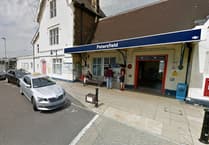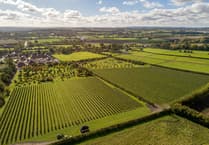On The Spain in Petersfield stands a grand brick-fronted house which most passers-by would find hard not to admire.
Although the brick frontage is from the 18th century, the bones of it date back to the 16th century.
On close inspection of this Grade II listed building, the observer will find a brown plaque which reads ‘John Goodyer, Botanist & Royalist, 1592-1664, lived here’ – a small acknowledgement for a former resident widely recognised as one of the great botanists of the 17th century.
Born in Alton in 1592, he was the youngest of four. It is not known where he went to school, but he learned Greek and Latin – which would help him in his future endeavours – as well as French, Italian, German and Dutch.
While at school John undertook an apprenticeship as an estate manager to William Yalden, land agent for estates owned by Magdalen College, Oxford, in and around Petersfield.
It is probable that through his connection with Yalden he got his first job as the agent for Sir Thomas Bilson of West Mapledurham, now Buriton.
He started working on the Bilson estates in Droxford in 1616 before moving to Petersfield in 1625. Because of the outdoor nature of his work, he took up botany as a hobby.
John’s journeys around the estate took much time, as he stopped to observe and take meticulous notes on the plants he saw. His observations identified several new species and distinguished the Wych elm from three other British elms.
He created gardens to experiment in growing exotic seeds and plants acquired from friends who included some of the most notable botanists of the time.
His first garden was established in Droxford and another was created at his house in The Spain. From these experiments he was credited with introducing the Jerusalem artichoke as a vegetable to British cuisine.
A lack of publication of his work meant John Goodyer’s contribution to botany was largely overlooked, but more recent studies of more notable names recognised his contribution to their work.
In 1629 Sir Thomas gifted the house in The Spain that Goodyer occupied to him, and it was there Goodyer took his bride, Patience Crumpe, in 1632. They had a daughter, Elizabeth, who predeceased them.
His reputation helped during the English Civil War, when in 1643 senior Royalist commander Lord Ralph Hopton ordered his troops ‘to defend and protect John Goodyer, his house, family, servants and estates’. This pass was found under floorboards during modern restoration.
John Goodyer died in 1664 and was buried in St Mary’s Churchyard, Buriton, near his wife.
With no surviving children, most of his estate went to his nephew, the Rev Edmund Yalden. But he left his books, manuscripts and notes to Magdalen College and set up a charitable trust to help educate poor children.
This charity, now the Goodyer Charity, was funded by rents from the house in The Spain and two fields at the upper end of The Causeway where Hadlow Terrace is now. The house was sold in 1870 and the land later, with the proceeds invested to continue the charity’s work.
A memorial window in St Mary’s Church, Buriton, shows the Goodyer arms and the inscription To the Glory of God and in memory of John Goodyer of Alton, Mapledurham, Petersfield 1592-1664, Royalist Botanist Founder of Goodyer Charity Weston.




